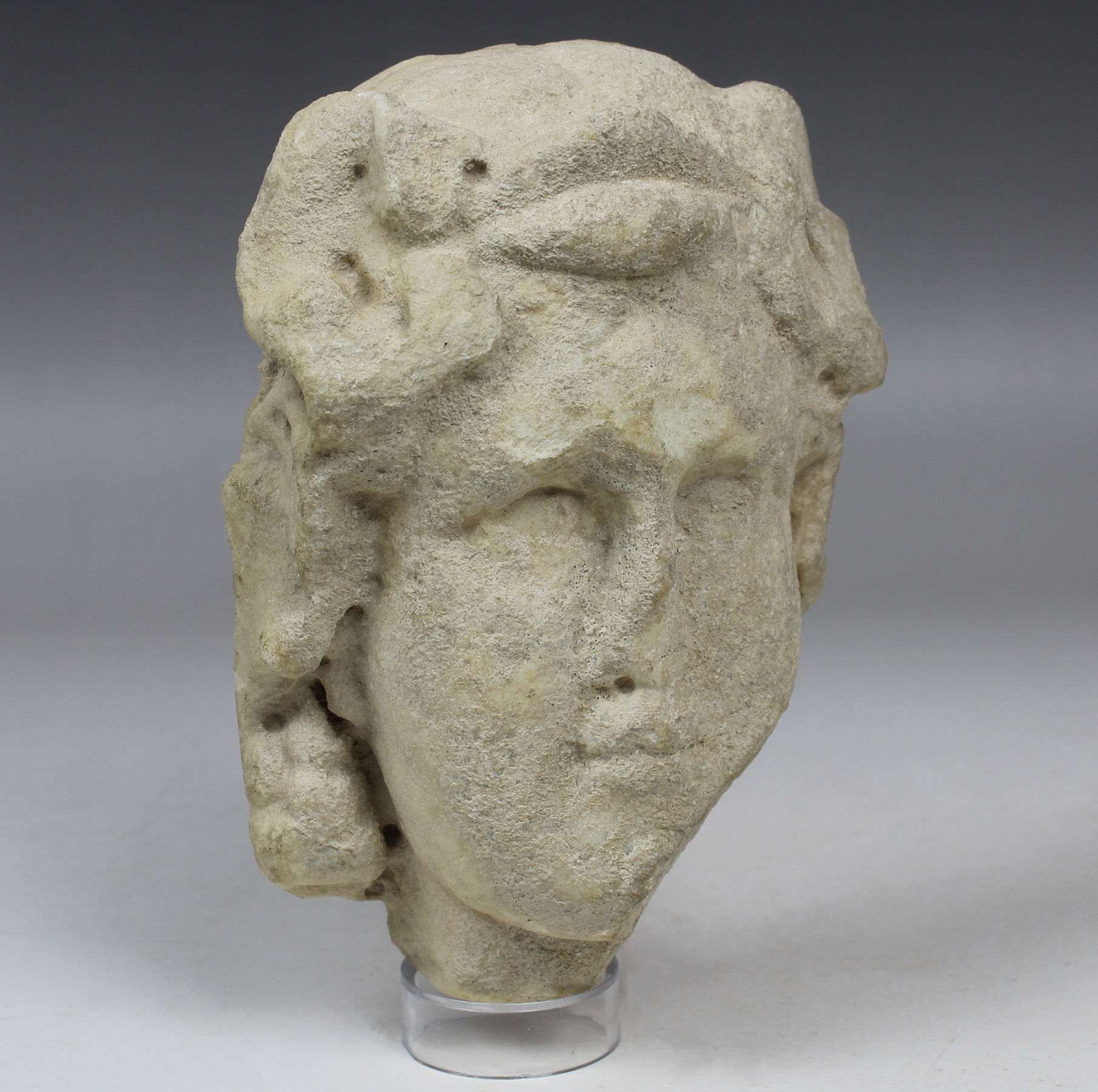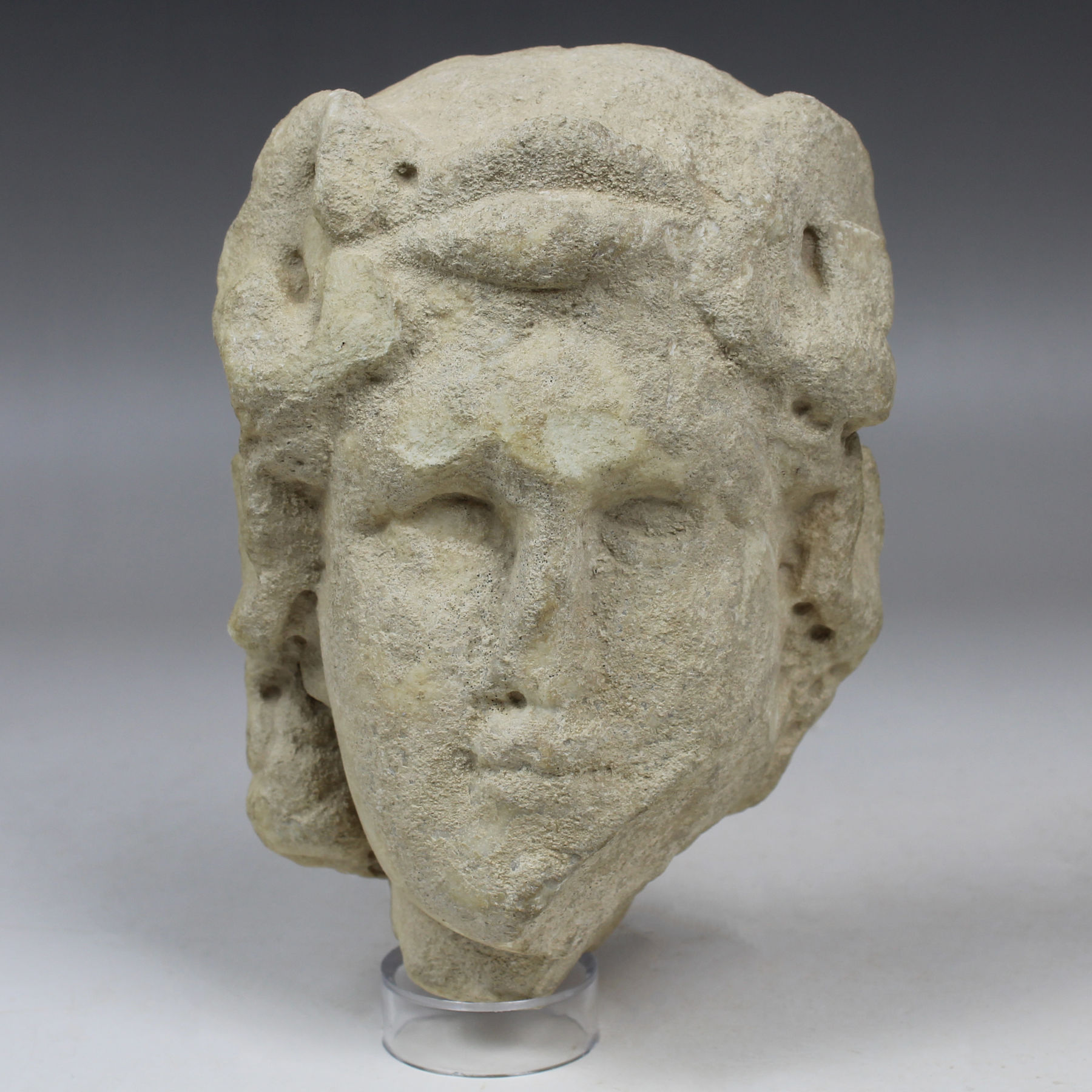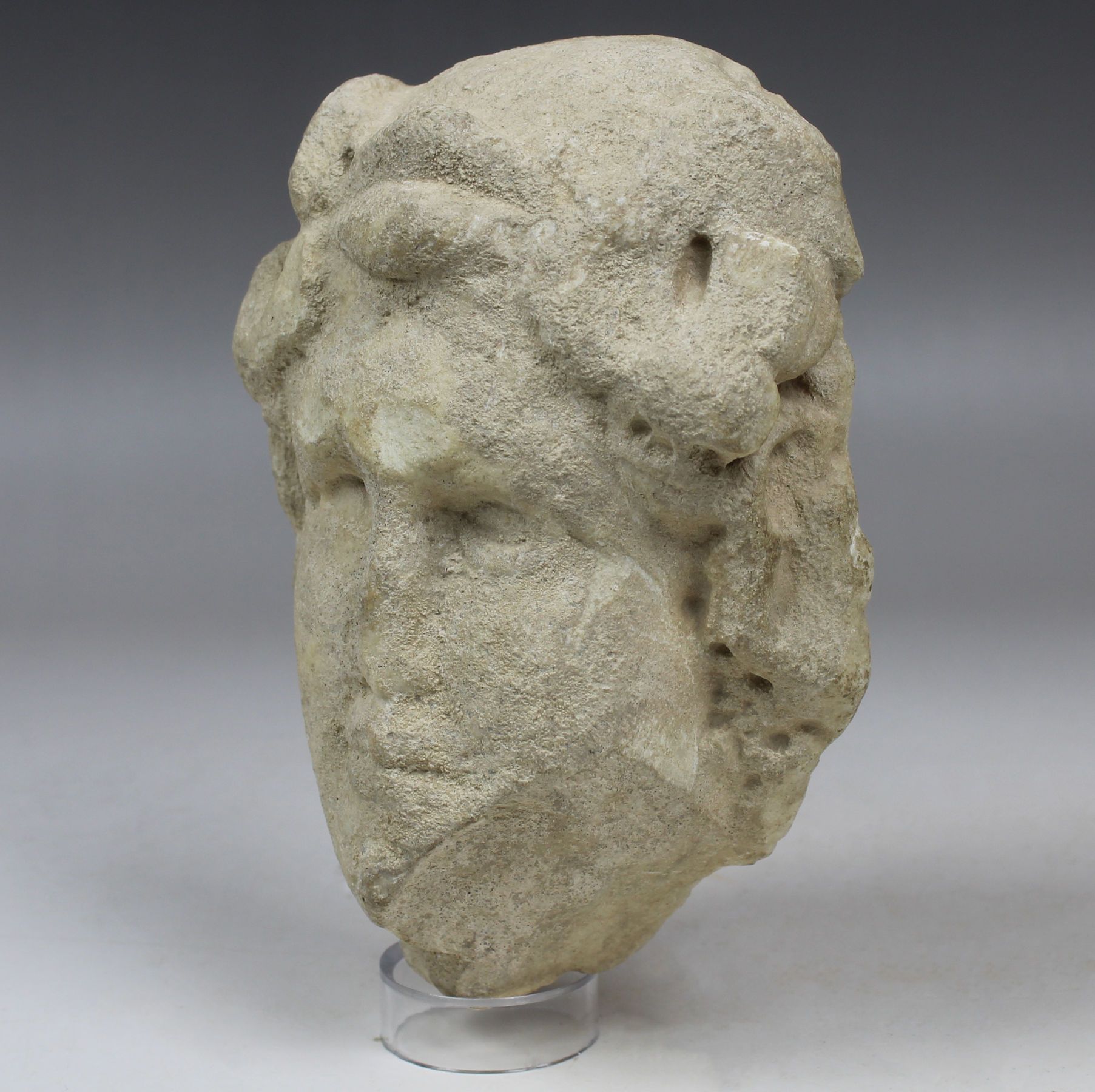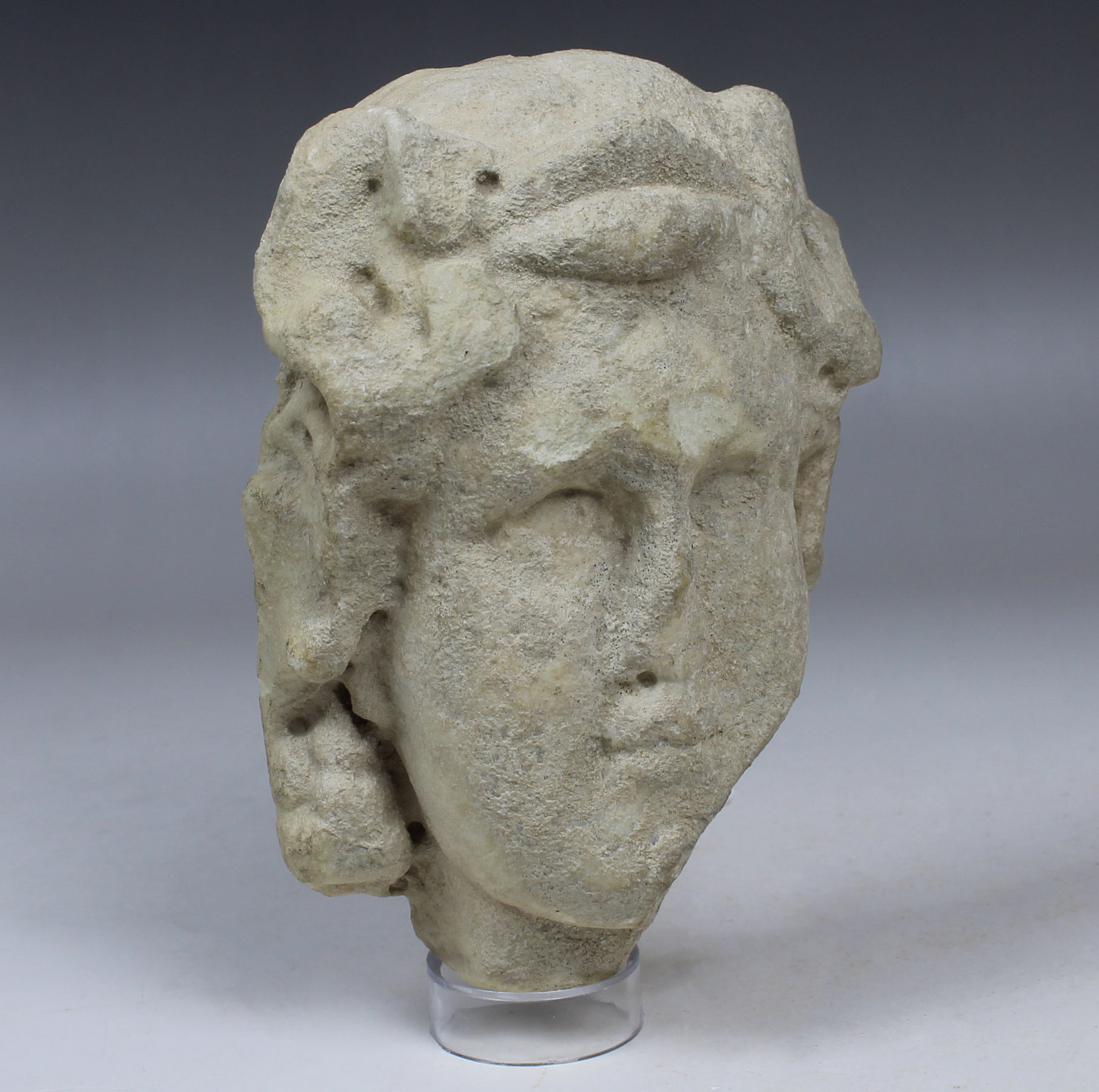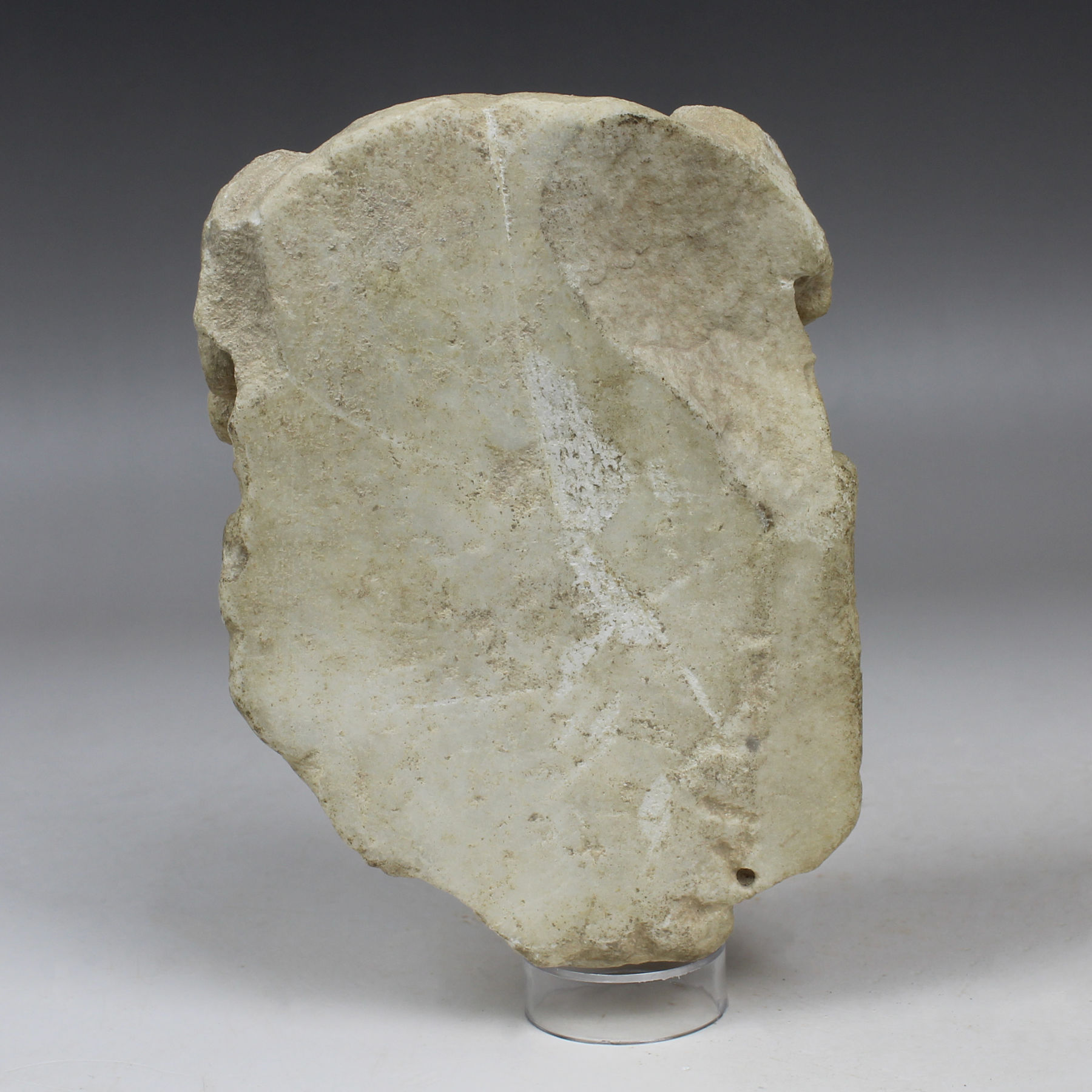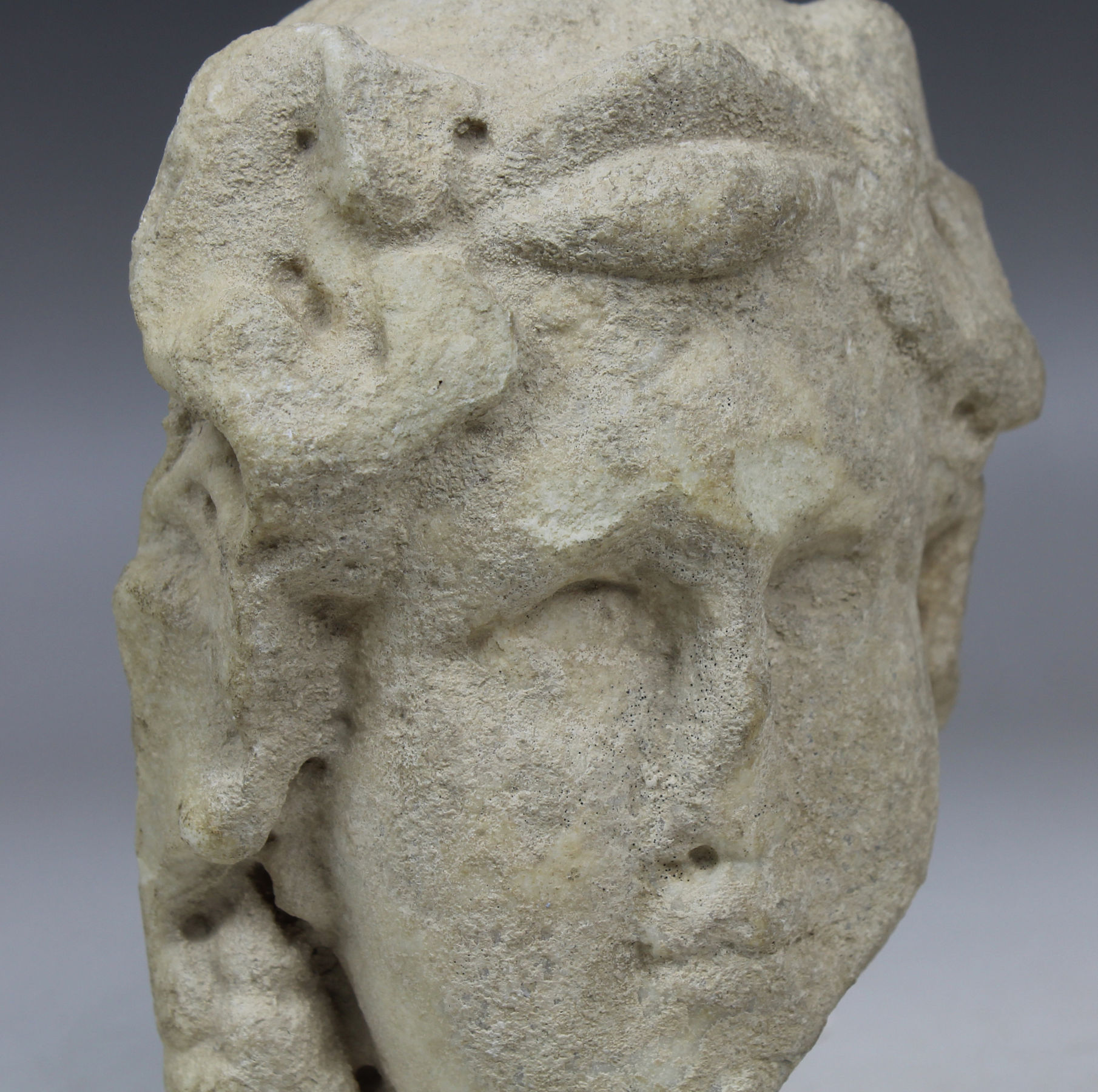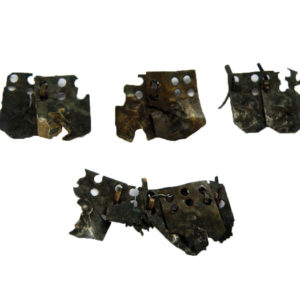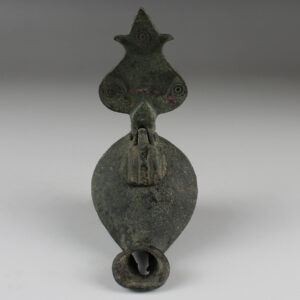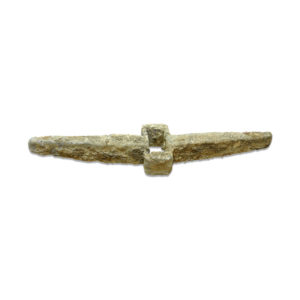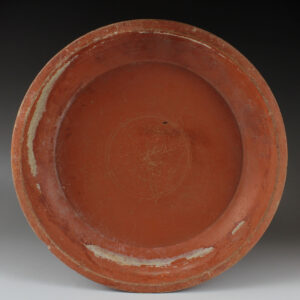Description
| ITEM | Fragmentary herm of youthful Bacchus / Dionysos |
| MATERIAL | Marble |
| CULTURE | Roman |
| PERIOD | 2nd Century A.D |
| DIMENSIONS | 130 mm x 93 mm |
| CONDITION | Good condition |
| PROVENANCE | Ex Spanish private collection, acquired between 1980 – 2000 |
Bacchus, the Roman god, and Dionysos, his Greek counterpart, are both associated with wine, revelry, and the pleasures of life. In Greek mythology, Dionysos is the son of Zeus and the mortal Semele. His birth was extraordinary, as he was twice-born; after his mother’s death during her pregnancy, Zeus rescued the unborn Dionysos and sewed him into his thigh until he was ready to be born again. Dionysos is often depicted as a youthful, effeminate figure, carrying a thyrsus (a staff crowned with ivy or pine cones) and accompanied by satyrs and maenads in ecstatic celebration.
In Roman mythology, Bacchus is the god of wine, fertility, and revelry. He is identified with the Greek Dionysos, but the Roman portrayal often emphasizes Bacchus’s association with the agricultural cycle and the transformative power of wine. Bacchus is depicted as a carefree and joyous figure, promoting the enjoyment of life’s pleasures. Festivals dedicated to Bacchus, known as the Bacchanalia, were marked by wild and exuberant celebrations, including music, dancing, and indulgence in wine. Both Dionysos and Bacchus represent the dual nature of wine, symbolizing both its intoxicating effects and its role in fostering communal celebrations and the appreciation of life’s abundant pleasures.
In the 2nd century A.D, Roman artists started depicting him as a youth, with a smooth face. The cult of Bacchus was hugely popular, signifying the freedomcreated by wine, music, and ecstatic dance.
Herm or herma are sculptures with a head, sometimes a torso, and male genitals carved at the appropriate height. They are thought to derive from theancient Greek practice of worshipping divinities that were in the form of cairns or columns of stone or wood. These later evolved into adding a head andphallus to the column. Many herma are of Hermes himself, but others – both gods and real figures like Socrates and Plato – are known. Statues like thisone were apotropaic and kept in many places – at crossroads, in temples, in public places, and in homes.


